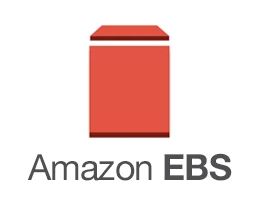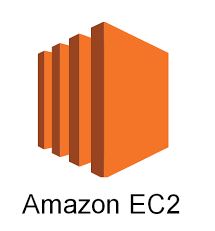Amazon Elastic Block Store
1. Amazon EBS is Amazon Elastic Block Store.
2. EBS volumes are network attached storage.
3. Amazon Elastic Block Store (EBS) is an easy-to-use, scalable, high-performance block-storage service designed for Amazon Elastic Compute Cloud (EC2).
4. You can create a file system on top of these Amazon Elastic Block Store , or use them in any way you would use a block device (such as a hard drive)
5. EBS volumes can be attached to EC2 instances.
6. For data requiring a higher level of durability, Amazon recommend using Amazon EBS volumes.
7. EBS volume data persists independently of the life of the instance and not like instance store.
8. Multiple EBS volumes can be attached to an instance.
9. Same EBS volume cannot attach to multiple instance.
10. EBS volume data is replicated across multiple servers in an AZ.
11. EBS volumes must be in the same AZ as of the instances.
12. You can keep the data of an EBS when the instance is terminated on enabling the Termination protection
13. Termination protection is turned off by default.
14. EBS failure rate of 0.1%-0.2% & an SLA of 99.95%.
15. Root EBS volumes are deleted on termination.
16. The Elastic Volumes feature allows you to increase capacity, tune performance, or change your volume type with a single CLI call, API call or a few console clicks.
17. You can now create AMIs with encrypted EBS root volumes.
18. You can now create AMIs with encrypted EBS data volumes.
19. EBS volume sizes and types can be upgraded without downtime.
20. Elastic Volumes allow you to increase volume size, adjust performance, or change the volume type while the volume is in use.
21. To migrate volumes between AZ’s create a snapshot then you need to create a volume in another AZ from the snapshot.
22. To automatically enable I/O on a volume with potential data inconsistencies, change the setting of the Auto-Enabled IO volume attribute.
23. EBS Standard Volumes have been renamed to EBS Magnetic volumes.
24. In EBS the root device is created under /dev/sda1 or /dev/xvda.
25. Throughput optimized EBS volumes cannot be a boot volume.
26. You can attach additional EBS volumes to a running instance.
27. You cannot decrease an EBS volume size.
28. When changing volumes the new volume must be at least the size of the current volume’s snapshot.
29. AMIs Images can be made public but not if they’re encrypted.
30. Max 5,000 EBS volumes by default.
31. Max 10,000 snapshots by default.
32. Amazon EBS provides seven volume types: Provisioned IOPS SSD (io2 Block Express, io2, and io1), General Purpose SSD (gp3 and gp2), Throughput Optimized HDD (st1) and Cold HDD (sc1).
33. When attached to EBS-optimized instances, Provisioned IOPS volumes can achieve single digit millisecond latencies.
34. You can stripe multiple volumes together to achieve up to 260,000 IOPS or 60,000 Mbps (or 7500 MB/s) when attached to larger EC2 instances.
35. All General Purpose SSD (gp3) volumes include 3,000 IOPS and 125 MB/s of consistent performance at no additional cost. Volumes can sustain the full 3,000 IOPS and 125 MB/s indefinitely.
36. EBS snapshots can be done in real time while the volume is attached and in use.
37. Amazon EBS encryption offers seamless encryption of EBS data volumes, boot volumes and snapshots, eliminating the need to build and maintain a secure key management infrastructure.
EBS Volume Types
General Purpose i GP2 (SSD).
2Baseline of 3 IOPS per GiB with a minimum of 100 IOPS.
Burst up to 3000 IOPS (for volumes >= 334GB).
Up to 16,000 IOPS per volume.
gp2 volumes canto deliver 90% of the provisioned performance 99% of the time.
A gp2 volume can range in size from 1 GiB to 16 TiB.
Provisioned IOPS – I01 (SSD).
More than 16,000 IOPS.
Up to 64,000 IOPS per volume.
Up to 50 IOPS per GiB.
Amazon EBS delivers the provisioned IOPS performance 99.9 percent of the time.
Throughput Optimized – ST1 (HDD)
Frequently accessed data, Throughput intensive workloads with large datasets and large I/O sizes, such as MapReduce, Kafka, log processing, data warehouse, and ETL workloads.
Throughput measured in MB/s, and includes the ability to burst up to 250 MB/s per TB, with a baseline throughput of 40 MB/s per TB and a maximum throughput of 500 MB/s per volume.
This Cannot be a boot volume.
Cold – SC1 (HDD)
Lowest cost storage
This cannot be a boot volume.
Less frequently accessed workloads with large, cold datasets.
These volumes can burst up to 80 MB/s per TB, with a baseline throughput of 12 MB/s per TB and a maximum throughput of 250 MB/s per volume.
Magnetic – Standard – (HDD) cheap, infrequently accessed storage – lowest cost storage that can be a boot volume.













